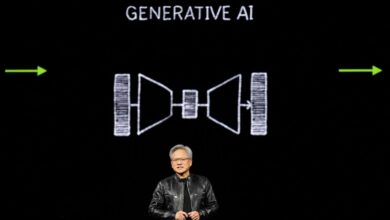Palantir wins contract to expand access to Project Maven AI tools

The Army awarded Palantir Technologies a $480 million contract to expand a data analysis and decision making tool to more military users across the globe.
The Maven Smart System is part of Project Maven, the Pentagon’s marquis artificial intelligence program, which ingests and processes data from multiple sources, like satellite imagery and geolocation data, and uses it to automatically detect potential targets.
Palantir, a Denver-based software and data analytics company, has been developing and experimenting with the prototype with a limited number of operators. The five-year contract, announced May 29, will allow the Defense Department to expand its use to thousands of users at five combatant commands: U.S. Central Command, European Command, Indo-Pacific Command, Northern Command and Transportation Command. The system will also be available to members of the Joint Staff.
“Users are going to span everyone from intel analysts and operators in some of the remote island chains across the world to leadership at the Pentagon,” Shannon Clark, Palantir’s head of defense growth, told reporters May 30. “This is taking what has been built in prototype and experimentation and bringing this to production.”
Clark described Maven as a contributor to the Pentagon’s Combined Joint All Domain Command and Control concept, which is driving efforts to integrate and share data across the many environments in which the military operates. The system has been involved in DOD exercises, including the Chief Digital and Artificial Intelligence Office’s Global Information Dominance Experiment series.
The CDAO is using these exercises, in part, to validate CJADC2 capabilities. The Defense Department announced in February that it had delivered a minimum viable capability for CJADC2, though declined to provide details on what specific capabilities were included in that. Clark would not confirm whether the Maven Smart System was part of that initial delivery.
Maven’s applications range from awareness and visibility of the battlefield, to congested logistics and joint fires, she said.
For example, the U.S. military has struggled in the past to visualize its location on the battlefield because that navigation data comes from a number of different sources. According to Andrew Locke, Palantir’s enterprise lead, Maven fuses that data and puts it on a map that leaders can use to provide direction to forces.
“Where this becomes powerful is when we start layering on additional sources of information to that, and so besides just seeing like where that formation is, we’re able to do really interesting things through data integration, and through joining with different datasets,” he said.
As part of the contract, Clark noted, Palantir will integrate AI capabilities from other firms to build on the baseline they’ve established.
Clark declined to confirm what DoD assets the Maven Smart System is integrated with or which systems it may connect to in the future, but noted that the firm’s intent is to incorporate any new data system or AI tool the government buys and wants to include in Maven.
“Should, tomorrow, a new sensor come online, should, tomorrow, a new AI capability come online, we want to be able to integrate with that,” she said.
Courtney Albon is C4ISRNET’s space and emerging technology reporter. She has covered the U.S. military since 2012, with a focus on the Air Force and Space Force. She has reported on some of the Defense Department’s most significant acquisition, budget and policy challenges.



